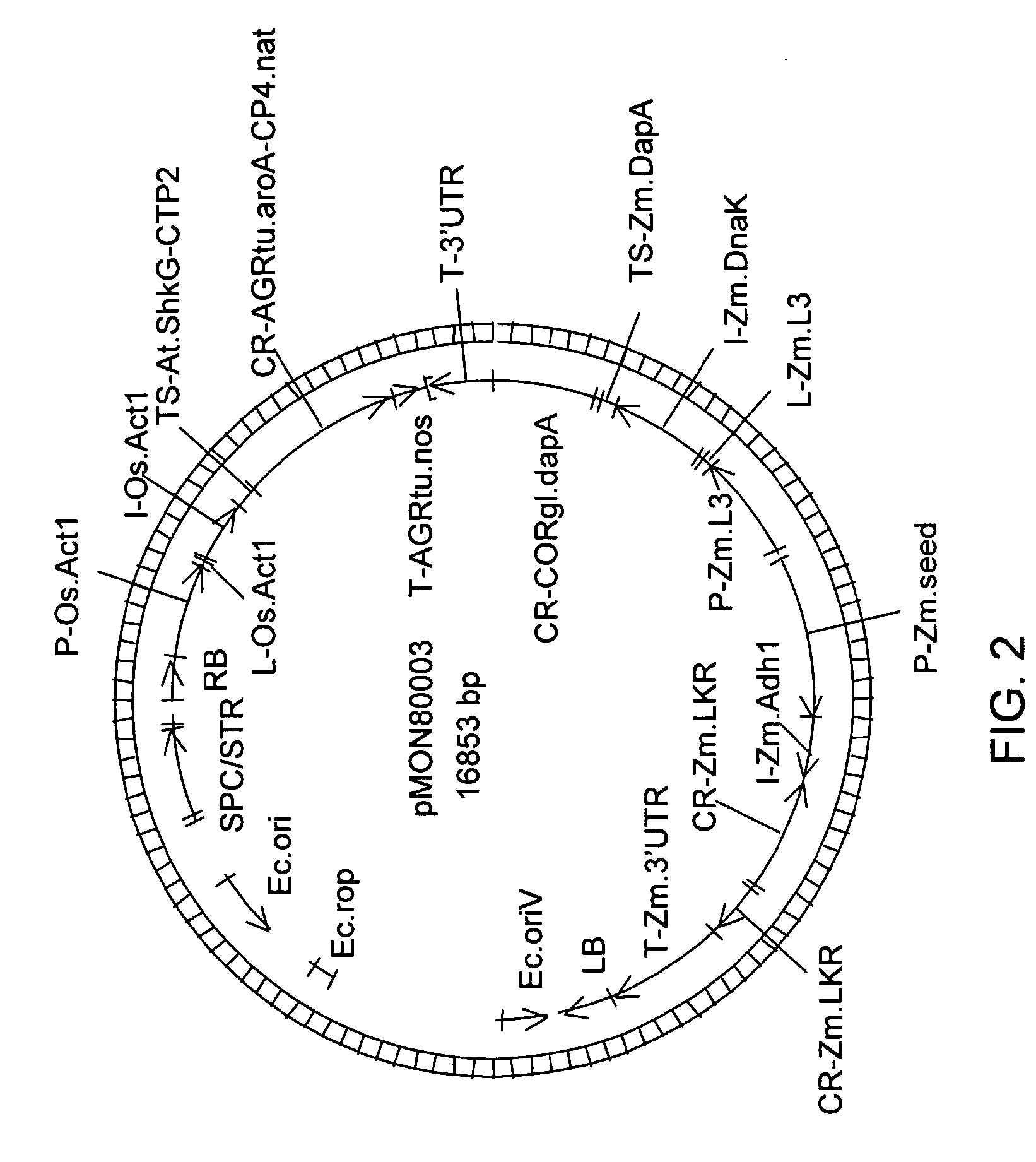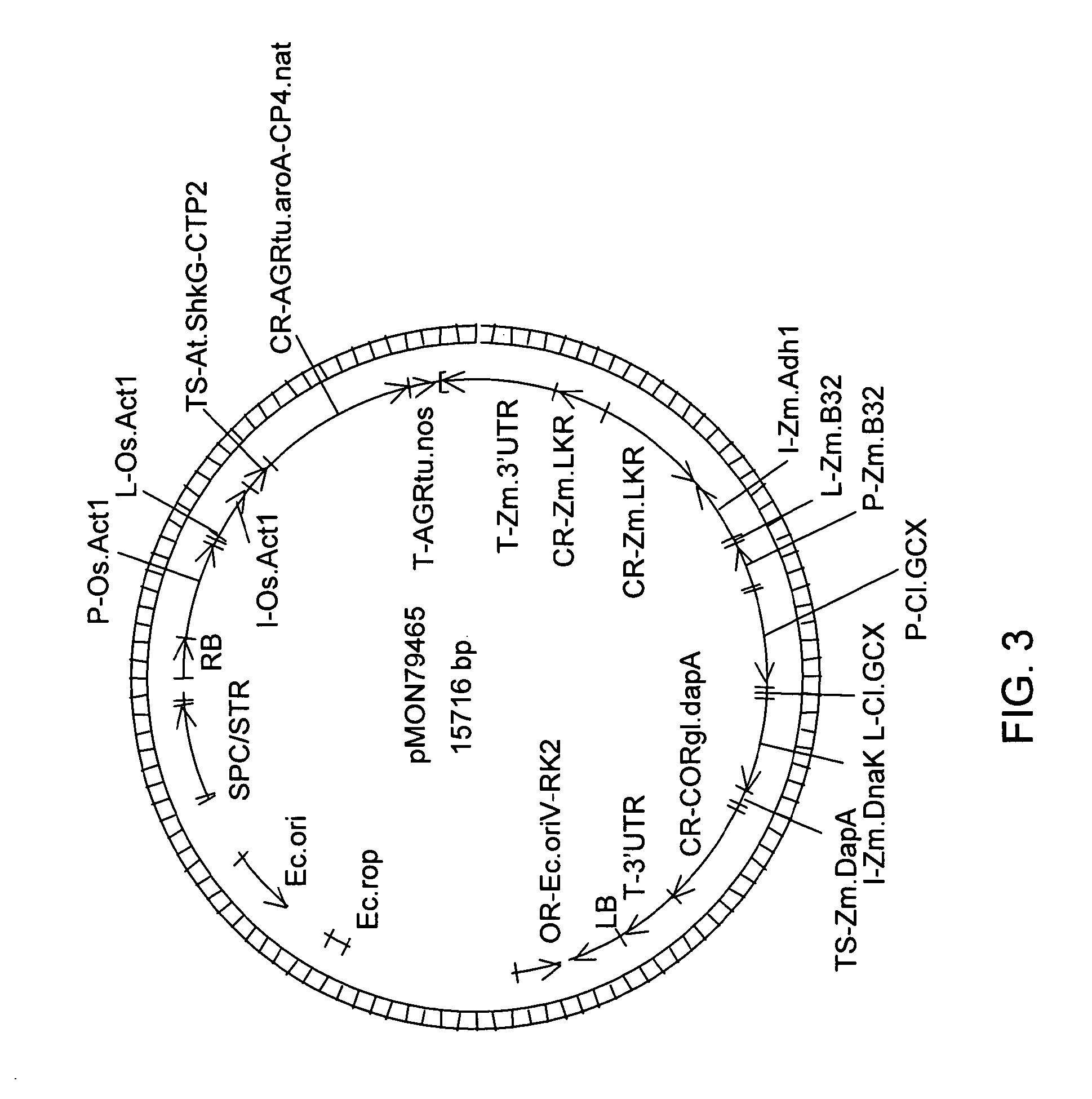Transgenic plant seed with increased lysine
a technology of lysine and plant seed, which is applied in the field of dna constructs, can solve the problems of low protein quality, general swelling (edema), and growth failure, and achieve the effect of higher protein quality and higher levels of lysin
- Summary
- Abstract
- Description
- Claims
- Application Information
AI Technical Summary
Benefits of technology
Problems solved by technology
Method used
Image
Examples
example 1
DNA Constructs and Plant Transformation
[0067]DNA constructs of the present invention comprise regulatory molecules operably linked to the DNA of interest. In particular, a DNA construct comprises a promoter, an intron, a 5′ leader, a coding or noncoding molecule and a 3′ untranslated region. The DNA constructs of the present invention were prepared using various molecular methods and tools, for example, those described in Sambrook et al., and variations of these methods that are known by those skilled in the art of DNA manipulation can be conducted to produce substantially similar constructs. Methods such as, PCR amplification, cloning and subcloning methods were used to operably link promoters, leaders, introns, transit peptides, coding molecules, noncoding molecules, and 3′ untranslated regions as listed in Table 1 in operable configurations and further illustrated in FIGS. 1-6. The DNA constructs were cloned into one or more plasmid backbones appropriate for use in Agrobacterium-...
example 2
Determination of Lysine Content of the Maize Tissues and Seed
[0069]Various methods are useful to determine the lysine content of plant tissues, seeds and processed products, for example, in the present invention liquid chromatography-mass spectrophotometry / mass spectrophotometry (LC-MS-MS) was used to analyze free lysine (parts per million, ppm) in the corn kernels of the various events identified as transformed with a DNA construct as listed in Table 1 and the results of this analysis are described in Table 1 and Table 2. Individual mature corn kernel samples of each event were first weighed, ground to a fine, homogeneous powder and extracted with an extraction solvent comprising methanol, water, and formic acid. In situations where kernels were bulked, approximately 30 mg of ground powder was used. Both liquid chromatography and multiple-reaction-monitoring (MRM) mass spectrometric techniques were used to separate lysine in the sample extract. After the separation, lysine was quan...
PUM
| Property | Measurement | Unit |
|---|---|---|
| herbicide resistance | aaaaa | aaaaa |
| amino acid composition | aaaaa | aaaaa |
| energy | aaaaa | aaaaa |
Abstract
Description
Claims
Application Information
 Login to View More
Login to View More - R&D
- Intellectual Property
- Life Sciences
- Materials
- Tech Scout
- Unparalleled Data Quality
- Higher Quality Content
- 60% Fewer Hallucinations
Browse by: Latest US Patents, China's latest patents, Technical Efficacy Thesaurus, Application Domain, Technology Topic, Popular Technical Reports.
© 2025 PatSnap. All rights reserved.Legal|Privacy policy|Modern Slavery Act Transparency Statement|Sitemap|About US| Contact US: help@patsnap.com



